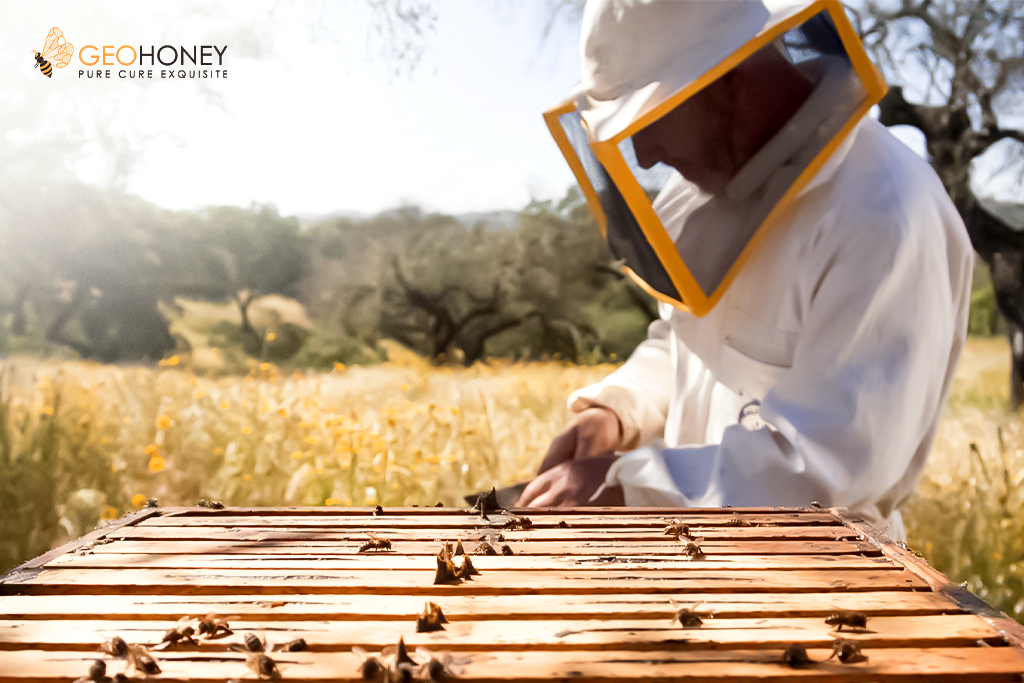- Tokyo: 12:27
- Singapore: 11:27
- Dubai: 07:27
- London: 03:27
- New York: 22:27
Starting Beekeeping In Spring - What To Keep In Mind?

Spring is the season that is associated mainly with the bees. Beekeepers are busy during this time of the year in expanding their apiaries. During this season, honey bees help grow their numbers to produce honey in larger quantities. And this is possible all because of the massive flowering season and abundance of flowers for bees to collect resources from.
Everything is related to each other in the process of honey production. For example, the abundance of flower & nectar sources means bees will raise more breeds to increase population, and increased bee population means they will gather more nectar for honey production.
Timing is everything in beekeeping! Honey bee populations overgrow, and changes happen rapidly in the bee colony. It is pretty tricky for the beekeeper to remain ahead - to expect, not only respond. The exact timing of the whole process depends upon seasonal variability and location.
What Are the Spring Activities for Bees & Beekeepers?
As the abundance of pollen and nectar shows up, the honey bees plan to work and build their populace. First, the queen bee will begin laying more eggs to permit the state to amplify the honey production to build its honey stores. Then, as the weather conditions get hotter, the honey bees will get more occupied, and you'll see a lot of swarms foraging around!
This is also when beekeepers split their hive or catch a beehive. Most beekeepers will put their captured swarm or split hive for sale. It's additionally the best opportunity to raise and mate new queen bees. Spring additionally implies mating season! You'll see high numbers of male bees or drones raised in the hives.
Indeed, there is a lot of movement during this season. Therefore, this is the ideal opportunity to learn more about beekeeping. It's additionally more accessible for beekeepers to mentor a beginner as they can show different practices and behaviors that you need to know.
The next step in spring season management is the Diagnosis of Dead Outs.
This is done to find out why bee colonies have failed to survive in the winter. For example, did the bees die due to American foulbrood (AFB) disease, or may there be any other reason?
If the honey stores are gone (or excessively far from the bee cluster), and the honey bees die while clustered, then the reason for colony collapse can be starvation. Therefore, another reason to check winter-kill dead-outs is to find whether the honey bees died due to AFB. In case it is observed that a bit of bunch of honey bees not covering the brood or altogether of the brood region, ensure to check brood remains cautiously for AFB symptoms of perforated capping and caramel-colored gooey remaining parts of brood there might be the size of completely dried out hatchlings.
Cleanup Is Essential –
On a pleasant, early spring day, when honey bees are effectively flying, clean the baseboard of the hive. There will be bunches of discarded wax capping, hive debris, and perhaps gathered dead bodies that the honey bees have not yet eliminated. In addition, white granules might be solidified honey the honey bees are disposing of. Essentially scrape or brush the base and replace the cases. Cleaning the bottom board will save the housekeeping honey bees significant work.
Managing Spring Medication –
Even though you presumably don't have to cure your honey bees during their first season, you'll need to think about medicine in the spring of your bee colony. Make sure to stop all prescription medicines five to about a month and a half before adding honey supers to the state to prevent contamination of the honey you want to harvest.
Checking Honey Production –
There are various ways that beekeepers monitor production. For example, a few beekeepers will open the hive to look, others will go by weight, and a few beekeepers hold on until the finish of the season to collect.
One of the more uncomplicated strategies is to have two hive tops with a medium or honey super sitting on one upside down. Now, put the other bee colony top on the super sitting on the upside-down top to get honey bees far from it. Proceed with this until the honey-filled outlines are taken out, including one more honey super on a case-by-case basis.
According to Mr. Basem Barry, founder & CEO of Geohoney, although spring is the best time to start beekeeping, it is not the only time to do so. Each season has its predicament, so it's ideal for investigating various circumstances for each season contingent upon where you wish to raise a hive.




I am a beekeeper myself. This article has been very useful for me. I had followed the instructions given in this article and had experienced the benefit.